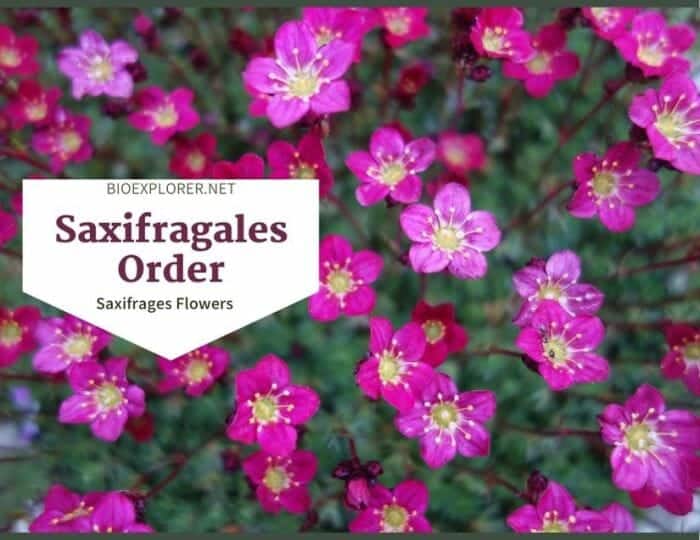
Saxifragales is a morphologically diverse dicotyledonous order of flowering plants worldwide. Saxifragales plants have hypanthiumWhat is hypanthium?It is a floral tube created by the fusion of the basal parts of the sepals, petals, and stamens; the rest of the flower parts emanate from this., glandular leaf teeth, serrate lamina margins, free petals, and small seeds. Most Saxifragales flowers are radially symmetrical and bisexual. The example species of Saxifragales are the Irish Rose, campfire plant, and gum vine.
Table of Contents
Saxifragales Families
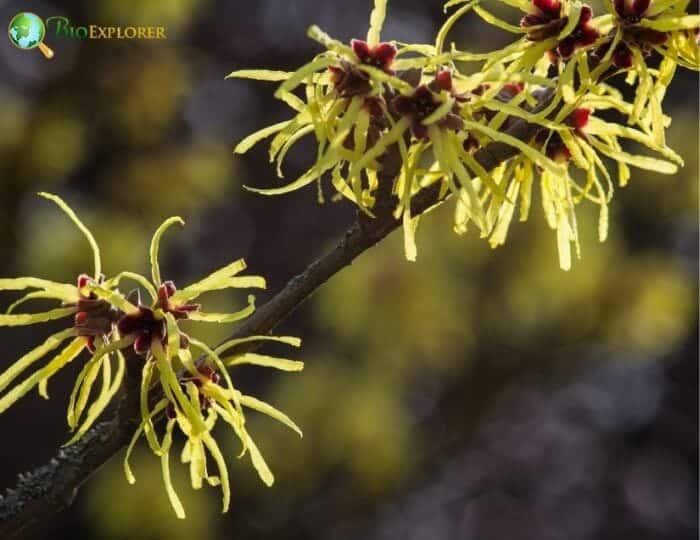
Saxifragales order includes 15 families, 112 genera, and 2600 species[1] of succulents, shrubs, vines, aquatics, large trees, and annual and perennial herbs. Much has been known about the composition of Saxifragales. However, its position among the core eudicots has been challenging to resolve. Molecular genetics has been the basis of modern classification.
The families under Saxifragales involve:
- Peridiscaceae (Ringflower family)
- Paeoniaceae (Peony family)
- Altingiaceae (Sweetgum family)
- Hamamelidaceae (Witch-hazel family)
- Cercidiphyllaceae (Caramel-tree family)
- Daphniphyllaceae (Laurel-leaf family)
- Crassulaceae (Orpine and Stonecrop family).
- Aphanopetalaceae (Gum-vine family)
- Tetracarpaeaceae (Delicate-laurel family)
- Penthoraceae (Ditch-stonecrop family)
- Haloragaceae (Water-milfoil family)
- Iteaceae (Sweetspire family)
- Grossulariaceae (Gooseberry family)
- Saxifragaceae (Saxifrage family)
- Cynomoriaceae (Maltese Mushroom family).
![]()
Saxifragales Distribution
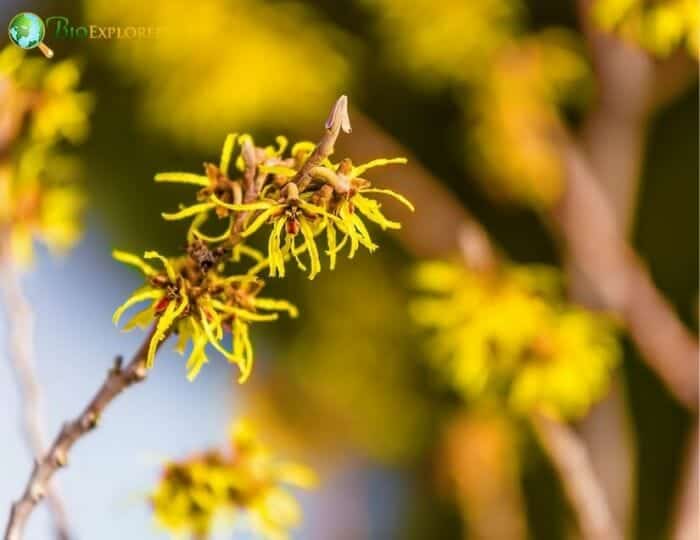
Saxifragales are distributed worldwide. However, most species are found in the temperate zones and rarely in the tropics.
- Species of Saxifragales can be aquatic, obligate aquatic, desert plants, or members of forests, grasslands, or tundra.
- The Crassulaceae is the most prominent family of this order. It is cosmopolitan but is mainly found in drier regions. They are chiefly found in the Cape region and Mexico.
- A few species are in South America and the Antipodes. Saxifragaceae[2] also has a wide distribution. They are primarily found in the northern temperate and Arctic.
- The Hamamelidaceae[3] are found in cool upland regions. They are distributed in Mexico and Colombia. Some species are thriving in Honduras.
- The species of the peony family, Paeoniaceae, are growing in Europe, western North America, and Asia.
- The Grossulariaceae also has a cosmopolitan distribution, but most members grow in the Northern Hemisphere.
![]()
Saxifragales Characteristics
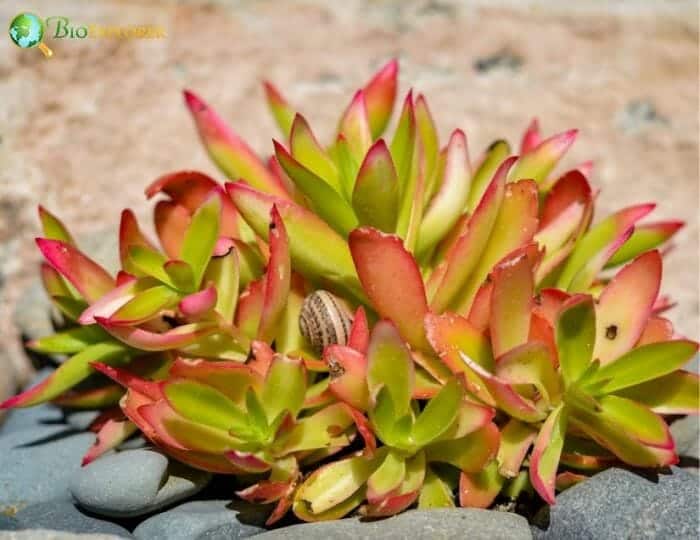
The plants under Saxifragales manifest great diversity morphologically. The characteristics shared by the members of this order include:
- Plant type: Members of this order are trees, shrubs, and lianas. Others are annual and perennial herbs, aquatics, and succulents.
- Stems: The woody features of the predominantly herbaceous families Crassulaceae and Saxifragaceae are exhibited as a secondary transition.
- Leaves: The plants have glandular leaf teeth. Their lamina margins are serrated.
- Flowers and inflorescences: Most flowers under Saxifragales are radially symmetrical and bisexual. They are solitary or in branch inflorescences.
- Sepals and petals: Usually, there are 4-5 sepals and 4-5 petals; free. Some species have no petals.
- Stamens and carpels:The stamens vary in numbers. The stamen anthers in the androecium are usually attached at their base to the filament’s apex (basifixed). Occasionally, stamen anthers are attached at the center (dorsifixed). The gynoeciumWhat is gynoecium?It is a collective term for all carpels (female parts) in flower. Carpels can be either apocarpous (separate) or syncarpous (combined or united) is partially fused bicarpellate (two carpels).
- Ovary and fruit:The ovary is superior or inferior. A hypanthium (a cup-shaped structure surrounding the ovary) is also present. The fruit is commonly follicular.
- Seeds: Compared to other angiosperms, Saxifragales have conspicuously small seeds (except Peridiscaceae).
![]()
Saxifragales Flowers and Reproduction

The Saxifragaceae flowers[4] are bisexual and radially symmetrical (actinomorphicWhat is actinomorphic?A characteristic of the flower exhibiting radial symmetry such as starfish or Daisy flower; capable of being bisected into identical halves along more than one axis, forming mirror images. Opposite is Zygomorphic.) in branched inflorescences or solitary. Their flowers are either greenish, white, or yellow. Other species are pink, red, or purple. There are 5 sepals.

Commonly, 5 petals are present, but some Saxifragaceae species manifest an absence of petals. Flowers typically have 5-10 stamens. The Saxifragaceae flowers’ basal portions of the sepals, petals, and stamens are fused into hypanthium. Species have 1 ovary with 2 carpels, 2-4 styles, and 2-4 stigmas. Usually, a nectariferous ovary disk exists.
The fungus gnats[5] largely pollinate the genus Mitella and a few other species of Saxifragaceae. Insects may also pollinate the flowers. The moth Greya (Prodoxidae) is a predator of seed and a pollinator of some members of Saxifragaceae.
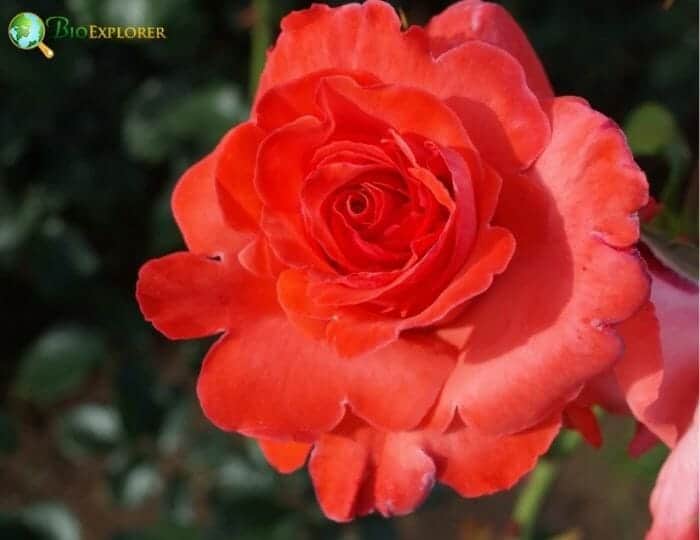
The stonecrops (Crassulaceae) is bisexual and actinomorphic flowers in solitary or branched cyme inflorescence. The flowers usually have 4-5 sepals and petals in the perianth. The Crassulaceae calyxWhat is calyx?A collective term for all the sepals of a flower; the lowermost whorl of floral organs (Plural form is calyces). and corollaWhat is corolla?A collective term referring to the petals of a flower. are free or connate. The stamens are equal to or commonly twice the number of the sepal or petal.

The Crassulaceae ovary is superior with 3-10 unfused carpels, with a nectar-producing gland at the base of each carpel. All plants of stonecrops display a rosette form, mostly with flowers above the foliage’s base. They have a range of colors but are commonly in the pastel type. Their richness in the nectar is an attraction for insects like bees, moths, and butterflies.
The witch-hazel family or Hamamelidaceae are unisexual or bisexual flowers in condensed panicles or botryoids inflorescences. The perianth usually consists of 4-5 small petals and 4-5 sepals. Occasionally, either the sepals or petals are absent. There are also cases that both are lacking. There are 2-numerous stamens.
Members have inferior, partially inferior, or superior ovaries. In addition, they have 2 syncarpousWhat is syncarpous?Flowering having united carpels; Contrast apocarpous. carpels that are regularly free at the apex. Pollination in this family is mostly via insects or wind.
The genus Disanthus is insect-pollinated but undergoes wind pollination when no pollinators visit the flower. The species of nectar-seeking birds[6] also visit and pollinate (passerine pollination) the flowers of the genus Rhodoleia.
![]()
Saxifragales Family Differences

The significant families under this order in terms of population are Crassulaceae (1400 species), Saxifragaceae (about 600 species), Grossulariaceae (195 accepted species names), and Hamamelidaceae (100 species).
Crassulaceae
- Members of this family are shrubs, herbs, and rare trees.
- Their leaves are simple. They can be opposite, spiral, or whorled. Stipules are absent. Characteristically, they are succulents. Their photosynthesis is through Crassulacean Acid Metabolism (CAM).
- Flowers are mostly bisexual and actinomorphic.
- Petals and sepals are usually 5 per flower.
- The stamen is equal to or twice the number of petals.
- The Crassulaceae ovary is superior.
- Nectaries are present.
- The Crassulaceae fruit is mostly follicetum, and the seeds are endospermousWhat is endospermous?An embryonic nutritive tissue formed during double fertilization by the fusion of a sperm with the polar nuclei..
![]()
Saxifragaceae
- Members of this family are perennial herbs and subshrubs. Sometimes, the species under this family are succulents.
- The leaves are simple and usually spiral. They can be pinnate or palmate. The species are mostly exstipulateWhat is exstipulate?Without stipules; Stipule is a small structure of appendage found at the base of some leaf petioles..
- The flowers of Saxifragaceae are bisexual and actinomorphic.
- Flowers have 5 sepals. Usually, there are 5 petals, but some species lack petals.
- The stamens vary in number.
- The Saxifragaceae ovary is superior or inferior.
- Saxifragaceae flowers possess a nectariferous ovary disk.
- The fruit is a capsule with endospermous seeds.
![]()
Grossulariaceae
- Members of Grossulariaceae are shrubs, occasionally lianescent.
- The leaves are simple and alternate all over. Generally, the leaves are widely ovate, having 3 lobes. The stipules are present.
- The Grossulariaceae flowers are unisexual or hermaphroditeWhat is hermaphrodite?An organism or structure possessing both male and femal reproductive organs; a flower with both stamens and pistils. Other synonyms: bisexual or monoclinous. and actinomorphic.
- The flowers in the Grossulariaceae family usually have 5 sepals and 5 petals, and there are 4-5 stamens.
- The Grossulariaceae ovary is hypogynous. The nectary disk is always present.
- The Grossulariaceae fruit is a fleshy berry, and the seeds are few to many.
![]()
Hamamelidaceae
- Members of this family are trees or shrubs. Most of the species possess stellate trichomes.
- The Hamamelidaceae leaves are simple, alternate, and distichousWhat is distichous?Two-ranked, with leaves or flowers in two opposite rows in the same plane.. Usually, the plants are stipulate.
- The Hamamelidaceae flowers are unisexual or bisexual.
- The Hamamelidaceae flowers generally have 4-5 sepals and petals. Sometimes, either the sepals or petals or both are absent. There are 2-numerous stamens.
- The Hamamelidaceae ovary is superior or inferior. The fruits in Hamamelidaceae flowers have woody capsules, and the seeds are endospermous.
![]()
Saxifragales Example Species
The following are the species belonging to Saxifragales:
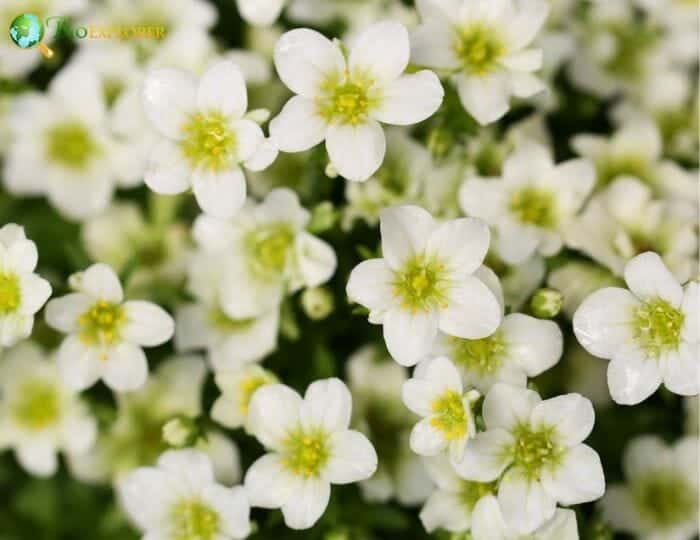
- Irish rose: The Irish rose or houseleek tree is excellent for gardens as beds, borders, patios, or containers.
- American sweetgum[7]: The tree is a popular ornamental plant. The wood of the American sweetgum is an essential commercial hardwood. Timber is a very significant material for plywood manufacturers. The gum exuded from the tree’s bark has medicinal value and is also used in making chewing gum.
- American witch-hazel: This small tree is used for landscaping.
- Foamflower: The plant is commonly used as a garden groundcover.
- Spreading gooseberry: The fruit is edible. The bark is used for medicinal purposes.
- Campfire plant: The plant is an attractive succulent with ornamental value.
- Virginia sweetspire: This shrub is a versatile ornamental plant used for landscaping.
- Gum vine: Gum vine is a useful foliage plant in the garden.
- Katsura tree: This tree has attractive foliage and is used for landscaping.
- Medusandra richardsiana
![]()











